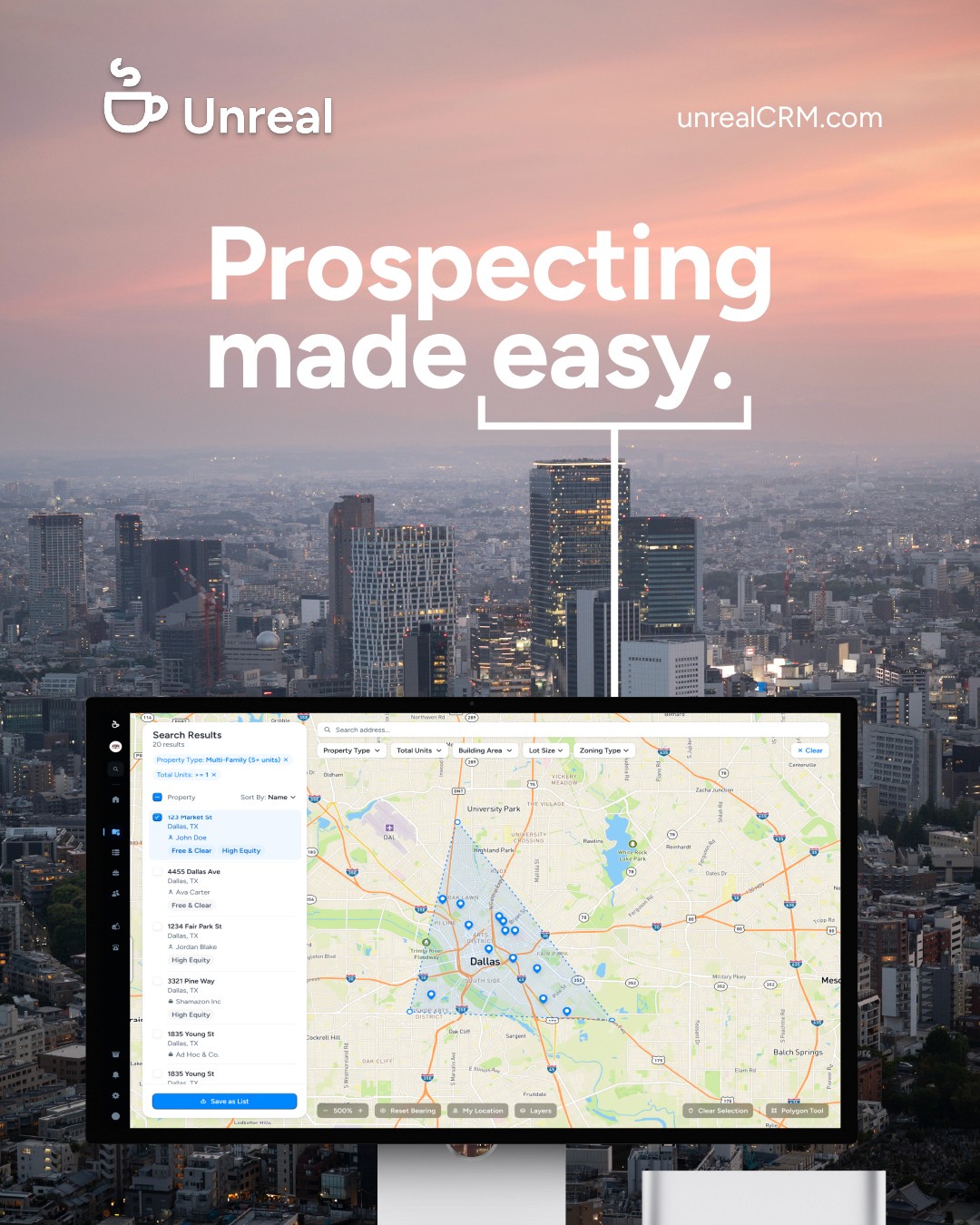Jul 22, 2025
Mark Rodriguez thought he had everything under control. The seasoned investor had spent three months analyzing a promising 48-unit multifamily property in Austin, running countless financial models, and negotiating what seemed like the perfect $2.3 million acquisition. His team had checked all the obvious boxes: cash flow projections looked solid, the neighborhood was gentrifying, and comparable sales supported the valuation.
Then, 48 hours before closing, his attorney discovered an environmental lien buried deep in the property records—a $180,000 cleanup obligation from a former gas station that had operated on the adjacent lot decades earlier. The lien had somehow slipped through months of due diligence. The deal collapsed overnight, taking with it $45,000 in sunk costs and three months of opportunity cost in a rapidly appreciating market.
This nightmare scenario illustrates a fundamental problem plaguing commercial real estate today: traditional underwriting approaches are fragmented, error-prone, and inadequate for today's complex investment landscape. But there's a better way. Comprehensive real estate underwriting checklists powered by property intelligence platforms are transforming how savvy investors evaluate deals—turning chaotic, scattered processes into systematic approaches that identify profitable opportunities while eliminating costly oversights.
The Hidden Costs of Traditional Underwriting Methods
Most real estate professionals approach underwriting like they're solving a jigsaw puzzle with half the pieces missing. Critical information sits scattered across multiple sources: property records in one system, permit histories in another, market data from various brokers, and environmental reports buried in municipal databases.
Critical Data Points Create Dangerous Information Gaps
According to GPARENCY's comprehensive analysis, the most common deal-killing oversights stem from incomplete property histories. Investors routinely miss ownership changes that reveal hidden liabilities, overlook permit violations that signal future compliance costs, and fail to identify environmental issues that can torpedo financing.
Consider Sarah Chen's experience with a Denver office building. Her initial underwriting showed strong fundamentals: 92% occupancy, credit tenants, and favorable lease terms. What she missed? A series of ownership transfers over the previous five years that had obscured a pattern of deferred maintenance. Three months after closing, the HVAC system failed catastrophically, requiring a $300,000 emergency replacement that wiped out two years of projected cash flow.
Manual Processes Slow Decision-Making When Speed Matters
Today's real estate market moves at breakneck speed. Industry research from CBRE shows that multifamily properties in competitive markets receive offers within 48-72 hours of listing. Yet traditional underwriting methods often require weeks to gather and analyze comprehensive data.
The accuracy problem compounds the speed problem. Manual data entry introduces errors at every step. Phone calls to municipal offices yield inconsistent information. Spreadsheet calculations contain formula mistakes. Critical documents get overlooked in email chains. Each error creates ripple effects that can turn profitable deals into disasters—or cause investors to walk away from genuine opportunities.
How Property Intelligence Platforms Aggregate Critical Underwriting Data
Modern property intelligence platforms solve the fragmentation problem by centralizing comprehensive property information that traditional methods often miss. Instead of hunting through dozens of disparate sources, investors access integrated databases that provide complete property pictures in minutes rather than weeks.
Comprehensive Property Histories in One System
When Miami investor David Park discovered property intelligence platforms, his underwriting process transformed overnight. Instead of spending days calling county offices and chasing paper trails, he could instantly access complete ownership histories, permit records, and transaction data for any property.
This comprehensive approach saved him from a near-miss on a Brickell Avenue retail property. Traditional underwriting showed clean financials and strong foot traffic. But integrated property intelligence revealed that the previous owner had filed three separate permit applications for structural modifications—all denied by the city due to zoning violations. This pattern suggested potential foundation issues that would have cost hundreds of thousands to resolve.
Permit Records and Renovation Histories Integration
Property intelligence platforms excel at connecting dots that manual processes miss. They integrate permit records with renovation histories, revealing whether previous improvements were properly permitted and completed to code. This integration proved crucial for Atlanta-based investor Jennifer Walsh.
Her target property—a 24-unit multifamily building—showed recent renovations that justified premium rents. However, integrated permit data revealed that major electrical work had been completed without proper permits. This discovery allowed her to negotiate a $125,000 price reduction to cover bringing the property up to code, turning a potential liability into additional equity.
Real-Time Market Data and Comparable Sales Analysis
The most sophisticated platforms combine property-specific intelligence with real-time market analytics. Rather than relying on outdated comparable sales from various sources, investors access current market conditions, rent trends, and absorption rates in unified dashboards.
This integration particularly benefits multifamily underwriting, where rental growth assumptions drive investment returns. Phoenix investor Robert Kim used integrated market intelligence to identify a value-add opportunity that traditional underwriting would have missed. While surface-level analysis showed below-market rents, deeper market data revealed that similar properties commanded 20% rent premiums after specific amenity improvements. This insight shaped his acquisition strategy and renovation budget, ultimately generating 34% IRR over a three-year hold period.
Building Systematic Commercial Real Estate Underwriting Checklists
Successful real estate underwriting requires systematic approaches that ensure no critical element gets overlooked. Professional investors use comprehensive checklists that transform complex deal evaluation into manageable, repeatable processes.
Essential Financial Analysis Checkpoints for Multifamily Properties
Multifamily underwriting begins with rigorous financial analysis that goes far beyond basic cash flow calculations. Industry experts recommend systematic evaluation of these key metrics:
Income Analysis:
Verify actual rents against market surveys (not just rent rolls)
Analyze lease terms and expiration schedules
Calculate effective gross income accounting for vacancy and collection losses
Review ancillary income sources (parking, storage, laundry)
Expense Evaluation:
Compare operating expenses to industry benchmarks (typically 35-45% of gross income for multifamily)
Project capital expenditures based on property age and condition
Factor in management fees, insurance increases, and tax escalations
Account for immediate capital needs identified during due diligence
Performance Metrics:
Calculate stabilized Net Operating Income (NOI) using conservative assumptions
Determine appropriate cap rates based on comparable sales and market conditions
Verify Debt Service Coverage Ratio (DSCR) meets lender requirements (typically 1.25x minimum)
Model multiple scenarios (base case, upside case, stress case)
Physical Property Inspection and Environmental Risk Assessment
Comprehensive due diligence checklists prevent physical and environmental surprises that kill deals. The environmental lien that destroyed Mark Rodriguez's Austin deal could have been avoided with systematic environmental screening.
Physical Inspection Protocol:
Structural systems assessment (foundation, framing, roof)
Mechanical systems evaluation (HVAC, plumbing, electrical)
Building envelope inspection (windows, insulation, weatherization)
Life safety systems review (fire protection, emergency egress)
Americans with Disabilities Act (ADA) compliance verification
Environmental Risk Screening:
Phase I Environmental Site Assessment for properties with potential contamination risk
Historical land use research to identify former gas stations, dry cleaners, or industrial facilities
Regulatory database searches for environmental violations or cleanup orders
Asbestos and lead-based paint assessment for older properties
Legal and Regulatory Compliance Verification
Regulatory compliance issues create hidden costs that can devastate investment returns. Systematic verification prevents surprises that traditional underwriting often misses.
Zoning and Land Use:
Verify current zoning allows existing and intended uses
Identify any non-conforming use issues that limit future flexibility
Review conditional use permits and their ongoing requirements
Assess development potential for value-add strategies
Permit and Code Compliance:
Verify all recent improvements have proper permits and certificates of occupancy
Identify outstanding violations or compliance orders
Review fire department and building department inspection records
Assess upcoming regulatory changes that might affect operations
Advanced Analytics Reveal Hidden Risks and Opportunities
While systematic checklists prevent oversights, advanced analytics reveal insights that manual processes typically miss. Data-driven underwriting identifies value-add potential and risk factors that determine long-term investment success.
Market Trend Analysis and Neighborhood Performance
CBRE's 2025 market outlook emphasizes the importance of neighborhood-level analytics in validating underwriting assumptions. Sophisticated investors use demographic trends, employment growth, and development patterns to assess long-term viability.
Seattle investor Maria Santos used neighborhood analytics to identify an emerging value-add opportunity in the Columbia City district. While traditional underwriting showed modest rent growth potential, advanced analytics revealed accelerating demographic changes: young professional influx, new transit connections, and significant retail development. This insight justified aggressive renovation budgets that generated 28% IRR over four years.
Predictive Modeling for Rental Growth and Occupancy Rates
Advanced platforms use machine learning algorithms to predict rental growth and occupancy trends based on local economic indicators, supply pipeline data, and demographic shifts. These models help investors validate rent growth assumptions that drive multifamily investment returns.
Consider how predictive modeling affected Chicago investor Tom Bradley's underwriting. His initial analysis assumed 3% annual rent growth based on historical averages. However, predictive models incorporating job growth forecasts, new supply data, and demographic trends suggested 5-7% growth was achievable in specific submarkets. This insight led him to acquire two properties in emerging neighborhoods that significantly outperformed his initial projections.
Value-Add Opportunity Identification Through Data Patterns
The most sophisticated underwriting approaches use data pattern recognition to identify value-creation opportunities. Comprehensive market intelligence reveals which amenity improvements, operational changes, or repositioning strategies generate the highest returns in specific markets.
Dallas-based investor Kevin Zhang used data pattern analysis to identify a unique opportunity in the Deep Ellum district. While comparable sales suggested limited upside potential, data patterns showed that properties with specific amenity packages (co-working spaces, rooftop access, pet facilities) commanded 25-30% rent premiums. This insight shaped his acquisition strategy and renovation budget, ultimately generating exceptional returns through strategic value-add improvements.
Streamlining Due Diligence Workflows for Speed and Accuracy
In competitive markets where speed determines deal success, automated systems reduce time-to-decision while improving accuracy through systematic data validation. Modern underwriting workflows eliminate manual data entry errors and accelerate verification processes.
Automated Data Collection and Verification
Property intelligence platforms automate data collection from multiple sources, reducing underwriting timelines from weeks to days. Industry leaders report 60-70% time savings through automated processes that maintain thoroughness while eliminating manual research.
Florida investor Lisa Rodriguez experienced this transformation firsthand. Her traditional underwriting process required 10-14 days to gather comprehensive property data. After implementing automated systems, she reduced this timeline to 2-3 days while actually increasing data depth and accuracy. This speed advantage helped her win three competitive deals in Tampa's hot multifamily market.
Digital Workflow Optimization and Task Automation
Modern underwriting platforms eliminate data entry errors through automated financial modeling, integrated document management, and systematic task tracking. These systems ensure nothing falls through the cracks while maintaining audit trails for all due diligence activities.
Workflow automation particularly benefits teams handling multiple deals simultaneously. Portland investment firm Pacific Northwest Capital reduced underwriting errors by 85% after implementing automated workflows that systematically verify data inputs, flag inconsistencies, and ensure all checklist items are completed before investment committee presentations.
Real-Time Collaboration and Document Management
Digital platforms enable real-time collaboration between investors, brokers, lenders, and due diligence professionals. Centralized document management eliminates version control issues while providing transparency into due diligence progress.
This coordination proved crucial for Boston investor Michael Chang's recent acquisition. His team included members in three different cities, making traditional document sharing inefficient and error-prone. Collaborative platforms enabled real-time updates, instant document sharing, and systematic task management that kept the entire team aligned throughout a complex 60-day due diligence process.
Creating Competitive Advantages in Fast-Moving Markets
Technology-enabled underwriting creates decisive advantages where speed and accuracy determine deal success. Investors who master systematic approaches consistently outperform competitors who rely on fragmented manual processes.
Early Opportunity Identification and Market Positioning
Integrated market intelligence helps investors identify opportunities before they become widely recognized. CBRE research indicates that successful investors consistently act on market trends 6-12 months before general market recognition.
Nashville investor Jennifer Park used advanced analytics to identify Music City's emerging neighborhoods 18 months before mainstream recognition. Her systematic approach to demographic analysis, development pipeline tracking, and transportation infrastructure assessment revealed value-creation opportunities that generated 40%+ IRR across her portfolio.
Enhanced Accuracy Leads to Better Negotiation Positions
Comprehensive underwriting provides confidence and data support for aggressive negotiation strategies. When investors truly understand property fundamentals, they can act decisively on genuine opportunities while avoiding overpriced assets.
This advantage proved crucial for Houston investor Carlos Rodriguez during the 2023 market correction. While competitors struggled with uncertainty, his systematic underwriting revealed specific properties where distressed sellers had priced assets below intrinsic value. His data-driven approach enabled confident offers that secured three properties at 15-20% discounts to replacement cost.
Scalable Processes Enable Portfolio Growth
Systematic underwriting processes scale across multiple markets and property types, enabling investors to expand their geographic reach and deal volume. Advanced underwriting systems provide consistent evaluation frameworks that work whether analyzing a single property or screening hundreds of opportunities.
Phoenix-based firm Desert Capital Partners exemplifies this scalability. Their systematic underwriting approach enabled expansion from local multifamily investments to a multi-state portfolio including office, retail, and industrial properties. Consistent processes and technology platforms allowed rapid market entry while maintaining rigorous evaluation standards.
Transforming Real Estate Underwriting for Competitive Success
The transformation from fragmented, error-prone underwriting to systematic, technology-enabled evaluation represents more than process improvement—it's a competitive necessity in today's complex real estate market. The difference between Mark Rodriguez's failed Austin deal and successful investors isn't luck or market timing. It's systematic preparation that identifies opportunities while avoiding costly mistakes.
Successful real estate underwriting in today's market requires three fundamental elements: comprehensive checklists that ensure nothing gets overlooked, property intelligence platforms that provide complete data integration, and automated workflows that deliver speed without sacrificing accuracy.
Your immediate action steps:
Implement systematic checklists that cover financial analysis, physical inspection, and regulatory compliance for your target property types
Adopt property intelligence platforms that integrate comprehensive data sources and eliminate manual research delays
Build automated workflows that streamline collaboration, reduce errors, and accelerate decision-making
The investors who master these systematic approaches will consistently outperform those who continue relying on fragmented manual processes. In a market where opportunities disappear in days rather than weeks, systematic underwriting isn't just better practice—it's the foundation of investment success.
The question isn't whether to evolve your underwriting approach. It's whether you'll make the transformation before your competitors do—or after they've already captured the best opportunities.



